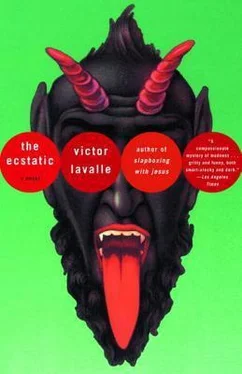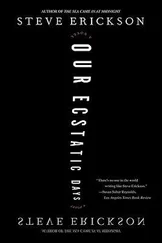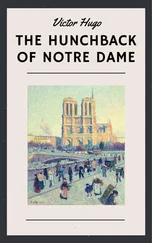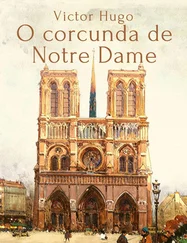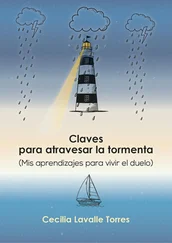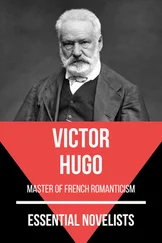I tried to scribble out a screenplay in twenty minutes. Apparently it takes longer than that. Everything I wrote was counterfeit. Just versions of movies I’d already seen, but in mine the characters were black or from Queens. A guy in a hockey mask killing geeks of the Ivy League. A demon possesses a girl in Southeast Queens and a troubled young minister has to cast the evil out. That’s how badly it went.
Eventually I gave up on creating something new and wrote down capsule synopses of monster movies I’d seen. So I’d know what to avoid. Pretty quickly I understood I had no talent for invention, but a decent memory instead. I recalled actors, directors, approximate running times and even the production companies. Soon I had pages of these catalog entries.
Gurgle Freaks
Feldspar Pictures American, 1985; 64 minutes
Director: Herman Shipley
Starring: Veronica Groober, Paige Pelham, Joe Stat
Veronica Groober stars as the villainess, a saleswoman of cosmetics who kills housewives by filling the throats of her victims with a bilious liquid which she regurgitates into their mouths. The special effects are actually quite gruesome. The villainess is on the prowl because she was disfigured in a boating accident and has, ever since, borne a terrible hatred against all fair females upon whom fate has shined.
Jains, Jains, Jains
Montu Films, 1986; 83 minutes
Director: Ezra Washington
Starring: Manfred Owens, Manil Oswati,
Helena and Bascom Hughes
Jains, Jains, Jains, despite the title and subject matter, is an American-made film. A Jain priest’s (a yati’s) dead body is mistakenly delivered to America to a quiet, decent childless family. (Helena and Bascom Huz). The woman pries the box open while her husband is at work and when she removes a shroud from his face the yati is brought back from the dead. The yati grants her one wish. (This has nothing to do with any aspect of the Jain religion.) She wishes her husband would return to the amorous ways of their youth. Then the yati kills her.
He commences slaughtering many of the neighborhood wives as the day continues and as he does he frees their many pets. Dogs, birds, turtles; the yati releases them all. The final murder is of the local cat lady who keeps about a hundred.
At the end of the film the viewer is supposed to understand, accept might be the better word, that this Jain priest has come to America to kill its unrighteous human beings and leave the nation to its holier, more innocent, creatures.
The final shot is of the unnamed yati (who is played by an obvious black American, Owens, who doesn’t even try an accent — this when there is actually an Indian cast member, Oswati, whose sole job is to explain why Jains are a threat to the United States) getting on a Greyhound bus in only his white robe and coming, presumably, to your town next.
This film might have been underwritten by the People for the Ethical Treatment of Animals or, perhaps, Pakistan.
After two hours I had nine of these on the table, but still no good ideas of my own.
I never saw another diner while I had my head down working, but when I stopped writing there were 199 plates on the tables, the remains of breakfast on most. Fingerprint-smudged glasses of juice beside them. I got lonely, so I left.
At one of the tan in-house phones I tried Mom and Grandma’s room, but there was no answer. My sister was staying on a separate floor for contestants, but that number was blocked. Each time I dialed her room the phone buzzed defensively. A person couldn’t even speak to those girls. Corruption entering through the ear.
As I left the Comfort Inn I passed the front desk, where a clerk’s dark brown blazer had been placed on top of the service bell. I didn’t bother to ring it because I expected no help.
The nut-shaped town of Lumpkin was broken into thirds and in ascending order. Starting low, between I-81 and Pleasant Valley Road; near the Hampton and Comfort Inns and Chili’s restaurant; the only movie theater; the Asian eateries. A tourist quadrant. European toilets aren’t like American, did you know that? I didn’t until I read about it. They’re designed so the shit doesn’t fall right in the water, but gets caught on a little shelf until you flush it away. That layout saves gallons of water, but the human surplus just sits there to be seen. Lumpkin’s tourist section resembled a European toilet; we were left there near the bottom to stew until the day we dropped and departed on the rushing interstate.
Four-lane Pleasant Valley Road split the tourists from downtown Lumpkin, the center of local business and historic landmarks. Some of the one-family private homes here suffered leans. Downtown was the fulcrum of this city’s poor, because every agency to feed or clothe the broke was there on Cameron Street.
And at Fairmont Avenue I reached the final checkpoint between downtown and uptown; this third was as nice as Jamaica Estates. The houses were larger than in the poorer section, but not by that much. The real difference was in architectural flourish. Porticos; Doric columns like a bastard.
Walking from my hotel to Fairmont Avenue at the other end of Lumpkin took only thirty minutes, and my pace was tame. There were gates around the homes in the poorer section, but in the nicest part of town there were none.
I spent a while on the sidewalks, but how long I couldn’t say. My armpits and stomach itched because I hadn’t showered yet. Sometimes I stood still in front of a home, but I was only thinking of how to reach my family, who weren’t in their rooms. The forsaken quality of the Comfort Inn had saturated the town; I didn’t pass any human beings.
I walked into a little ripple of a coffee store even though no one was inside. I opened the door and tried the pay phone before I realized the place should’ve been locked up. My calls to Mom’s room went unanswered. It wasn’t that the store was closed: the lights were on and the coffee machine brewed quietly. More like the owner had stepped out the room, maybe quick around the corner.
I poured myself some apple cider from the jug in a fridge behind the counter. To relax I untied my shoes, took them off. My feet appreciated the gesture. I allowed Ahmed Abdel into my life once again.
Even I was mildly worried about how much this guy bothered me. It wasn’t just for Lorraine. My freedom seemed constricted compared to the expansive life offered him through incarceration. On page two of the pamphlet there was a brief question-and-answer conducted by the same windswept young journalist at BU.
Q: What is the greatest threat to freedom today, Mr. Abdel?
A: The elite business oligarchies of the Western World.
Q: What question would you like the people who read this to consider?
A: We know who watches us. The police. The military. The mediacracy. But ask yourself who watches the watchmen?
What a twit. What an ultramaroon. This was the man Lorraine would get arrested for? A guy who quoted comic books? With a pen, notepad and my stationary anger I wrote the guy a letter on my last Goodness Girls flyer.
Mr. Abdel,
How is prison? They call it the gray bar hotel sometimes. A friend gave me the pamphlet with your photo on the back with your interview. You have a lot of admirers.
From your ‘watchmen’ comment I think you have been reading the funnies well into adulthood. Socialism’s overrated anyway. I’ll bet you couldn’t spell Muhammad before starting your prison bid.
I noticed that you wear dreadlocks, but you are Japanese. Is it that you think you’re black? Do you wish that you were black? It’s silly to use the name you do. Why is it that other minorities pretend they’re black to fight the system? You aren’t black.
Читать дальше
